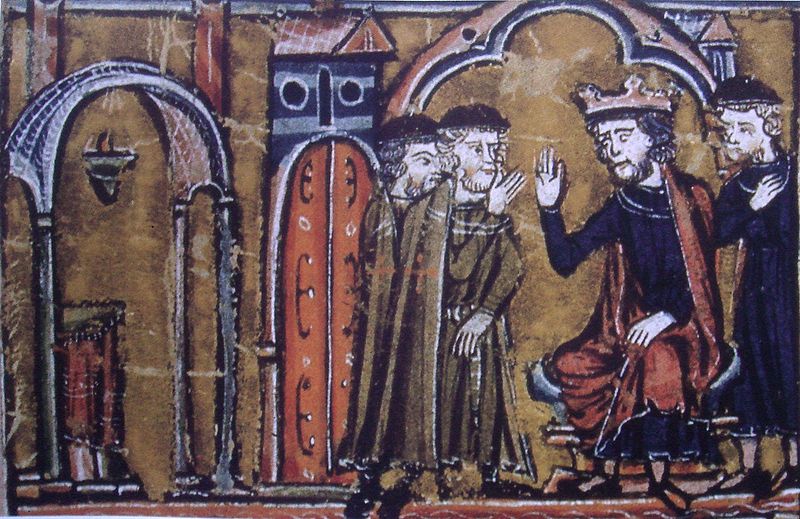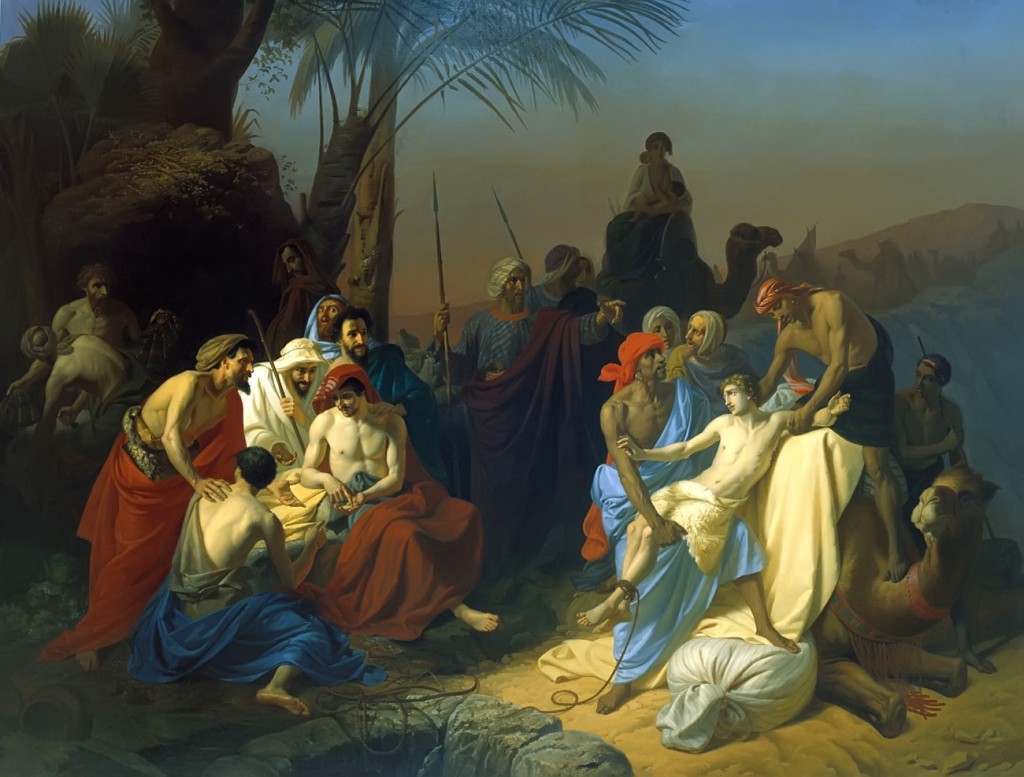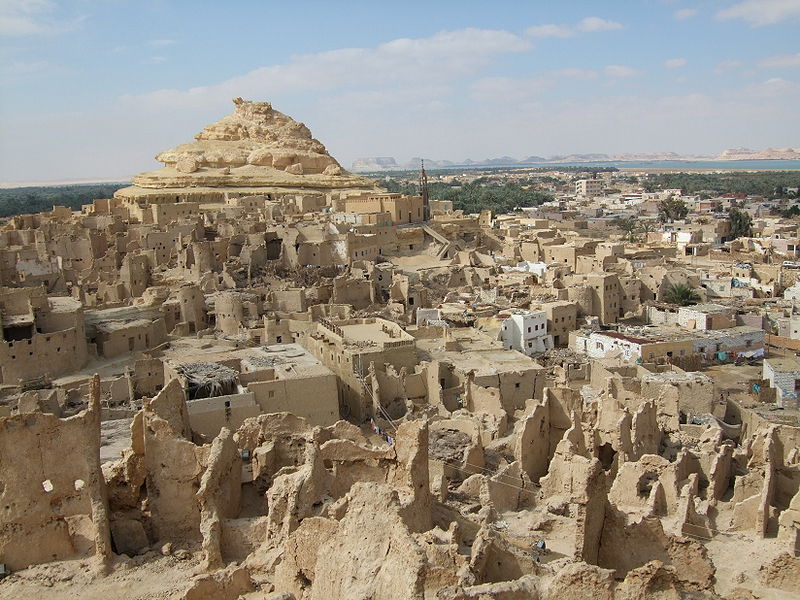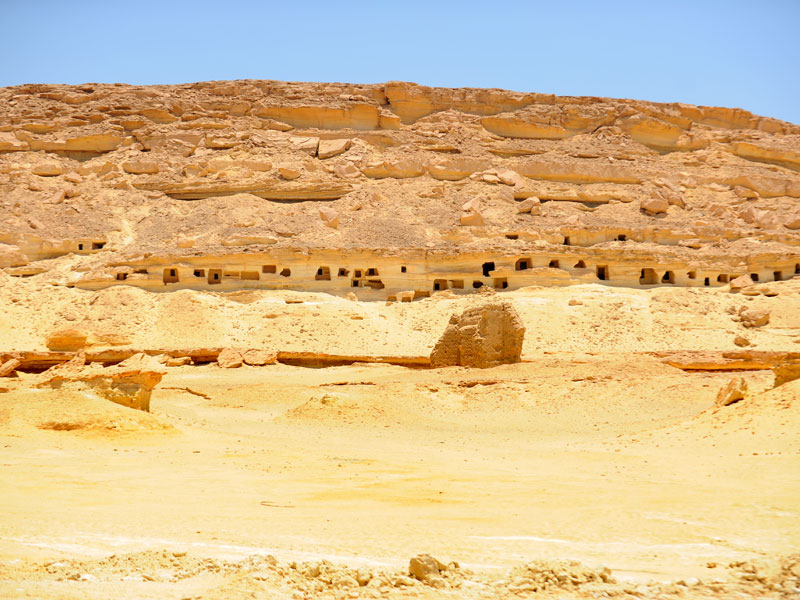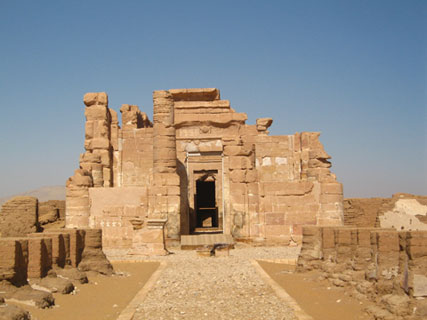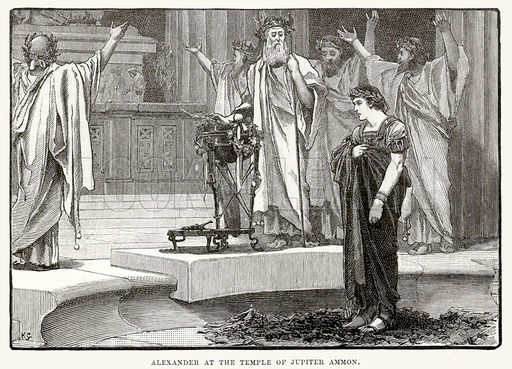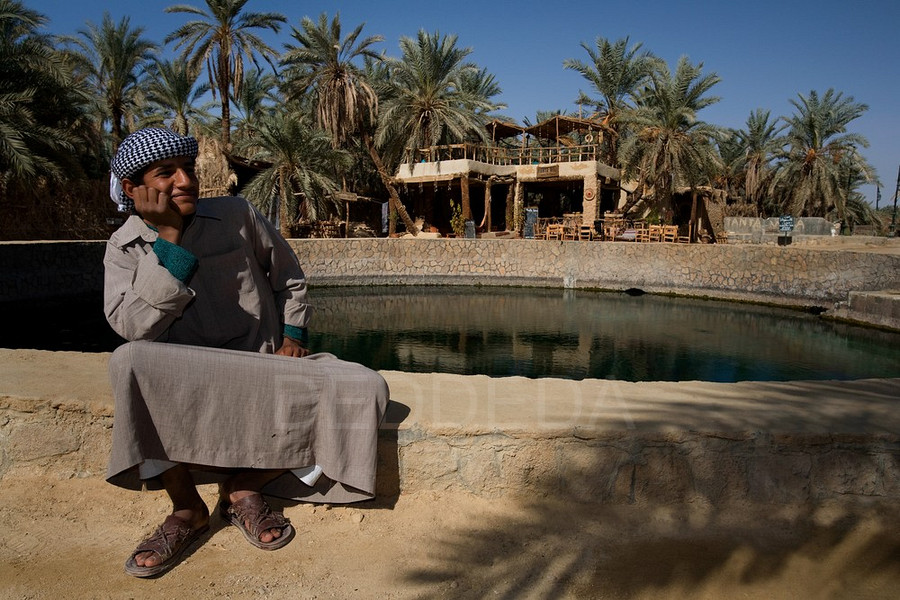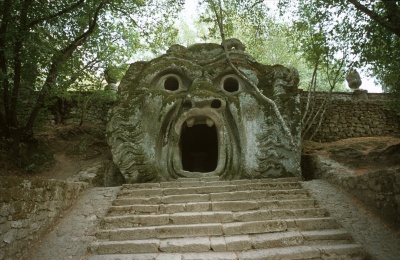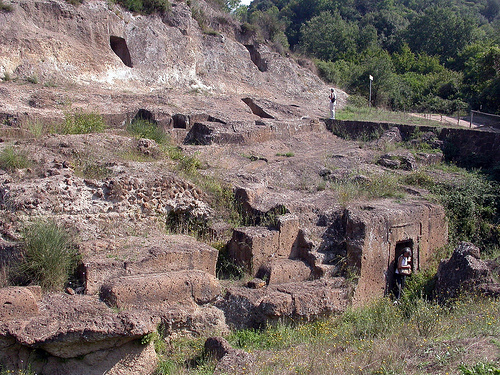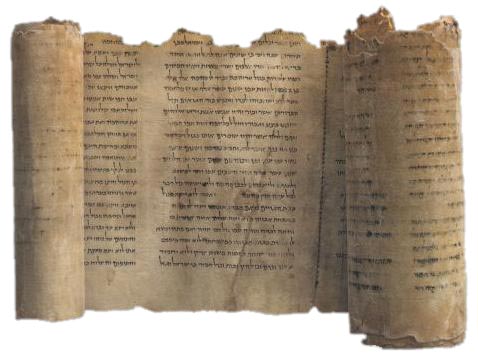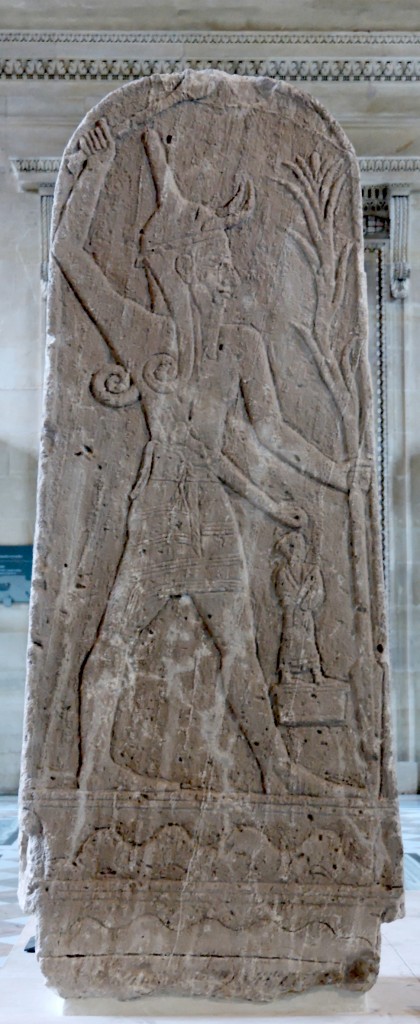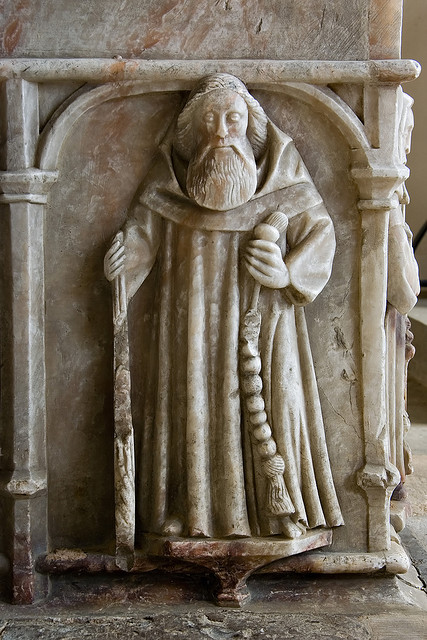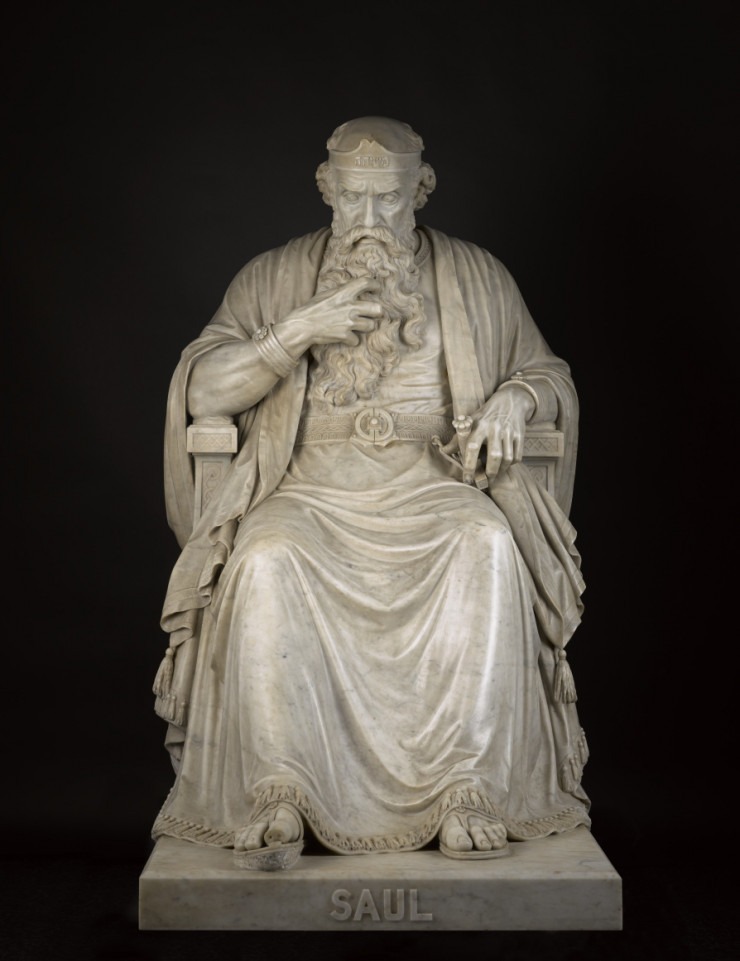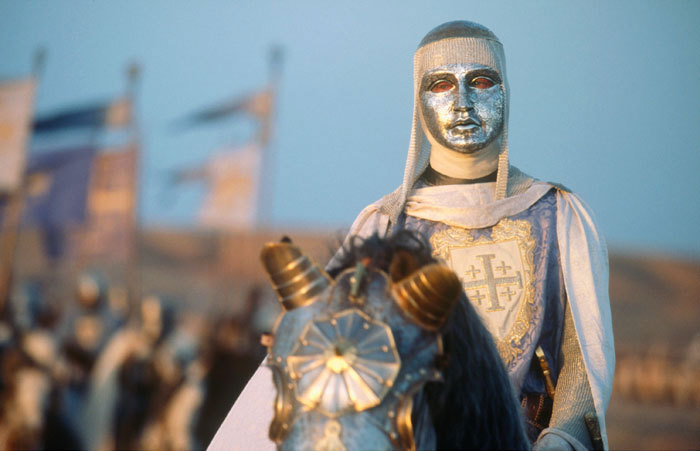 (Note from Moe: This is a living post that will grow and expand over time. Please feel free to comment or let me know your thoughts.)
(Note from Moe: This is a living post that will grow and expand over time. Please feel free to comment or let me know your thoughts.)
Famous Bedouin Saying – “I against my brother, my brothers and I against my cousins, then my cousins and I against strangers”
Today I would like to write about a tribe from the East whom I believe may be my kin; the Bedouins. The Bedouins (Baudouin, Beduin, Bedawin, bed’oo-in, written also Bed- awee, Bedawi, and Ahl Bedoo) are a group of various desert dwelling families that originated in the Middle East or North Africa in approximately the years from 500BC – 700 AD and who are still active to this very day. These people can currently be found in countries such as Egypt, Syria, Lebanon, Israel, Palestine and also at the Dead Sea of Jordan, where the infamous Dead Sea Scrolls were found in the year 1946. Even though there are active communities of the Bedouins all over the world, the actual true origins of these people are a mystery.
What we all need to understand is that the original name of these peoples was not the Bedouins.
In studying history you will find that tribes had often changed names to conceal themselves or to identify new tribal marriages and family alliances that would in effect kill the old blood line and start anew. The renaming of your tribe when new blood and foreign tribe alliances were merged with yours, was very common back then. The original name of the Bedouins were the ancient Idumeans, who had occupied ancient Palestine or Phoenicia from in the time of the Old Testament.
The name Palestine is derived from Pattisthan. It is above the hill Segor that was then called Edom of the Edomites, but afterwards men called it Seyr, and subsequently Idumea. It is said that at the right side of the Dead Sea the wife of Lot still stands in likeness of a salt stone, because she looked behind her when the cities sunk into hell. East of the Dead Sea is a castle that King Baldwin had constructed on a hill which was called Carak, meaning “Royal”. This castle was made when Baldwin had conquered the Holy Land and put it into the hands of Christians; which it thereafter was called “Mount Royal”.(1)
This area they inhabited would be known as Judea in the Bible, which retained the name of Idumea in the time of Saint Mark. This area of Palestine would be the Idumean’s original ancient homeland in the time of Jesus Christ; when under Moses and Joshua the Idumeans were confined to the east and south of the Dead Sea. This is the very same place where it is said the Nabateans were, and where the Dead Sea Scrolls were found at the capital of east Edom; known then as Bozrah and more commonly known today as Petra.
This connection between King Baldwin, the Idumeans and Petra are where I believe the Bedouins had spawned, which I will explain below.
Matthew 16:18 – And I tell you that you are PETRA (Peter), and on this rock I will build my church, and the gates of Hades will not overcome it.
Herod the Great, the Son of Antipater was a native of Idumea that had aligned his tribe with the Romans in 37 BC . This was the time when Herod had taken Galilee and Idumea first and then finally conquered Jerusalem, who from the time of Pompey were the masters of Palestine. To make his claims to the throne legitimate, he had married the Hasmonean and Maccabe princess, Miriamne. However, it was not until the time of the crusades in the twelfth century, when the Knights Templar and King Baldwin had reconquered this area, that these Idumeans officially changed their names in the history books. It was at this time that you will find that the French, and quite possibly some English, had aligned themselves with the Idumeans. This Herod the Great and Templar Crusade connection to the Idumeans will play a huge part in their tribal name change to the Bedouins at a later date under the King of Jerusalem, King Baldwin who we all might as well call, “King Bedouin”.
It was Baldwin in the twelfth century, who had captured Jerusalem in 1099 and had led two expeditions through Idumea, where he had reached the magnificent secret city of Petra. Petra was known as the Castle of the Valley of Moses or Sela. It was here where Baldwin was then shown the waters which flowed from the rock when struck by the great Hebrew lawgiver Moses, and in the adjoining Mount Hor the King and his companions were led to believe they saw Mount Sinai. (2) It was at this time when he made an alliance for a price; the protection from the Idumean (Bedouin) leader Dubais,who they together laid siege to the city. Baldwin then had built the castle of Montreal, at Shobek on the Haj or Moslem pilgrim road in Moab, north of Petra. In 1178, Baldwin IV granted the settlement (casale) ‘Sileta’ to the Hospitallers, and the Idumeans (Bedouins).
This is where I believe this specific tribe of Idumeans near or at Petra officially became Baldwins (Bedouins), and where I am certain that King Baldwin was in the need of a military force of some kind if he was to maintain a stronghold in Palestine. Hence, that is why he aligned with the Hospitallers and this specific tribe, who were most likely his long lost desert kin from the days of Herod the Great. There is a detailed description of this Bedouin tribe relationship to Baldwin with its branches of families furnished in a twelfth century charter from the King to the Hospitallers in the year 1180; that which gave the Hospitallers 100 more tents of Bedouin near Belvoir.
Here is a quote from “Biblical researches in Palestine, and in the adjacent regions,” By Edward Robinson and Eli Smith that explains what happened at this time;
At this time the whole land east of the Jordan was known to the crusaders as Arabia; the northern part around Bozrah they called Arabia Prima; the region around Kerak, Arabia Secunda; and that further south, Arabia Tertia or Syria Sobal.3
The first expedition took place under Baldwin I, in A. D. 1100.4 Marching from Hebron around the south end of the Dead Sea and by Segor (Zoar), the forces of the crusaders came in five days through the mountains with great difficulty to Wady Musa, to which they already gave the name “Vallis Moysi.”3 It does not argue higldy for their skill in biblical geography, that they took the adjacent mountain with the tomb of Aaron for Mount Sinai; and the brook which flows down the valley, for the water which came fortli when Moses smote the rock.6 From this valley, Albert of Aix relates, that they marched still one day further to a city called Susum; but as neither Fulcher of Chartres who was present, nor any other historian, mentions this further expedition, and the name of such a city is elsewhere unknown, the testimony of this writer, who was not an eyewitness, seems to be of doubtful authority. Fulcher relates, that after three days spent at Wady Musa, they returned by way of Hebron to Jerusalem.
In the second expedition, which took place under the same king in A. D. 1115, Baldwin appears to have crossed the Jordan and marched through the whole length of Arabia Secunda. He was accompanied only by two hundred knights and four hundred footmen; and with this small force he built up in Arabia Tertia, in eighteen days, a former strong castle upon a steep isolated hill, in the midst of a region fertile in corn, oil, and wine. To this fortress, the first erected by the Latins east of the Jordan, he gave the name of Hons Regalis (Mount Royal). Arabian writers speak of it as Shobek, which name it bears to the present day.1—In the very next year, A. D. 1116, king Baldwin revisited his fortress with two hundred followers; and advanced afterwards as far as to Ailah on the Red Sea; of which place he appears to have taken possession. He would have proceeded to the convent of Mount Sinai; but was dissuaded at the entreaty of the monks.”
Therefor, based on these facts above we must assume that the Idumeans did not become the “Bedouins” until the time of the Crusades and the charter issued by King Baldwin; now making this tribe the “Baldwins” or in french, the “Badouins/Bedouins.”
The Egyptians were said to call them the”bow people”, who were their neighboring enemies in ancient times; they used to have a different tribe name as well. What I have found interesting is that you will find maybe one book that mentions this Idumean and Bedouin relationship, but when you research it further, you will find that the Bedouins are truly the descendants of the original Phoenician Idumeans in this region. To the Syrians, the Bedouins were regarded as an extraordinary race of beings such as those tribes who had dwelled in the heart of the desert as nomads like the Anaza, Kaibar, Tai, and others.(1) They are known as an outstanding race of free men equally singular in their physical and moral character, for it is stated that”Bedouin Princes” for amongst princes; a prince is a prince no matter how small his territory. Let us also not forget the story of the Bedouin Prince Abraham, who held the Bedouin court in Egypt. Or that of the Biblical Joseph, who was once sold into slavery by his own brothers as the Bedouin slave, to then later again become a Bedouin Prince who had adorned the coat of many colors and then became judge of his peoples.(2)
I would first like to start out with the various theories to what the meaning of the name Bedouin is. Some believe it means “Desert Dweller” or “Those in the Desert” which is from an Arabic word badawī that is said to derive from the word bādiyah (بَادِية), or semiarid desert (as opposed to ṣaḥrāʾ صَحْرَاء, very arid desert). Therefor it is believed that”Bedouin” means, “those in bādiyah” or “those in the desert”. However, I simply disagree with this theory because Bedouin is a French word and not Arabic. The reason being is that when these peoples first came onto the history scene, there was no Arabic language to speak of . The main language would have been the Phoenician, Egyptian and or Greek dialect, since the Arabs did not rule in this region at this time. Therefor, the Arabs could not have gave them their original name of the Bedouins.
The facts are that Bedouin is not really an Arabic name, but a french name that is a corruption of Baudouin. This French name is derived from the root of the Egyptian word, Beda and in Old English “Bedawin” or Bodwin to the modern English version of Baldwin.
The Bedouins are the Protector of the Holy Sepulchre who under King Baudouin/Baldwin, whose descendants are the ancient “Bedais or Badais of Ptolemy” or “Badanutha” of the Greeks and of Plinys. You will find these same Bedais would mainly reside is the ancient Panopolis, now known as the Siwa Oasis where you will find a famous Temple in ruins named, Umm Beda or Um Ebeida (Jupiter Amon). The temple is surrounded by the remains of a small Roman town filled with unmistakable subterranean structures, homes and or tombs that are unique to these peoples, and are also found in a few other locations throughout the world.
Many historians mistakenly call these cities Necropolises, but they are in fact just cities built into mountains or underground. The way this unique tribe of peoples built their homes and tombs ares their calling card, that when you compare them to other similar structures you will find that they are in fact the same peoples under assumed names or concealed identities for religious safety purposes.
This photo below shows the town in the Siwa Oasis from the highest vantage point.
In this photo you can see these homes and or tombs built into the side of a mountain.
It was in this Oasis where after taking the advice of their priests, they had built the Temple Umm Beda and put a magician in charge of it, called Amon. Amon you will find is a woman called Umm Beda or Mabuda where visitors came to it from far countries which were all under the king’s sway.
The Bedais would be no other than the descendants and or kin of the leading Macedonian general Ptolemy, who had ascended the throne of Egypt to become the founder of a dynasty called the “Bedais of Ptolemy” that had ruled that country for close to three centuries. According to 2 Maccabees 1:10, Aristobulus had belonged to a priestly family and was a teacher of Ptolemy in Egypt. These events would occur around the time when Alexander the Great was also at this Oasis where he was ordained the KING OF KINGS, whom I AM sure he was related to Ptolemy making him a Bedai as well.
It was at the Temple of Umm Beda where Alexander was ordained the Macedonian messiah, “The Son of Amon”. This dynasty known as the Bedais of Ptolemy would also be known in the Bible previously as the Hivities, Canaanites and then later the Maccabees or Hasmoneans. It was at this time, that Ptolemy Soter had made Judea an Egyptian province. The name Ptolemy was common among the Macedonian upper class at the time of Alexander the Great, and there were several of this name among Alexander’s army, one of whom made himself King of Egypt in 323 BC: Ptolemy I Soter. All the kings after him, until Egypt became a Roman province in 30 BC, were also Ptolemies. Let us also not forget that it was in 1995 where the tomb of Alexander the Great was discovered in this very same location here in the Siwa Oasis.(4)This I believe makes Umm Beda one of the best kept or uncovered secrets in the world.
This Oasis or what I would like to call the “Garden of Eden”, was the ancient seat of the oracle temple of Jupiter-Amon (Zeus Amon). Amon means the “Hidden God.” It has been proved they had named this place “Mansion of the Gods” from inscriptions dated approximately 400 B.C. on the ruined walls near where Alexander the Great was proclaimed the “Son of Amon” by the Temple Priests. You will not find any other earlier mention in history of the Bedas who would later be known as the Bedouins .(3) I believe the name was corrupted from Bedais, Bodwin, Bedawin, Baldwin to Bedouin when either King Baldwin during the Crusades had came here, or a slight chance at the time when the French had invaded the region under Napoleon. But there would be no other explanation to how the Idumeans now go by the French corruption of Bodwin or Baldwin. Hence, I am going to hang my hat on the Bedouins are the lost tribe of King Baldwin theory.
There is another ancient town that it appears that no historian seems to know who these people were or where they came from. But if you simply put two and two together using the “Bedais of Ptolemy”, the Temple of Umm Beda or Um Ebeida (Jupiter Amon) in the Siwa Oasis that is surrounded by a Roman town, you then get the Italian/Rome connection to the ancient Etruscan town known as the “Village of Bieda.” In documents dated from the middle ages names these peoples as Biedani in Italy with their own ancient town called the Village of Bieda, but is now known as the city of Blera whose name is Italian for Bieda. Both Pliny and Strabo mention the city and peoples in their writing that was still existing in their time.
These Biedani are no other than the Bedias of Ptomelmy from the Siwa Oasis.
From Wkikpedia: It is the birthplace of Pope Sabinian; Pope Paschal II was also originally thought to be from here. In 772, it was destroyed by the Lombards of King Desiderius. In the 13th-15th centuries, it belonged to the Di Vico family. In 1247 the army of Frederick II ravaged it. In the 15th century, Pope Boniface IX gave Blera to the Anguillara family, who owned it until 1572, apart from a short period from 1465 under direct Papal control. Later it followed the history of the Papal States.
Carved into the cliffs are numerous sepulchral type homes and tombs that are one above the other with steps connecting them all.
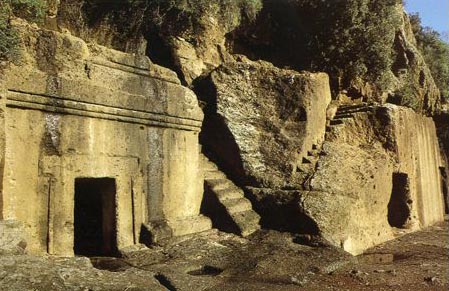 Now compare the above photos of these structures of the Village of Beida in Italy, with that of the Ptolemy’s of Bedai in the Siwa Oasis and the Nabateans of Petra; we now have an irrefutable connection between these three cities built by the same family of priests and kings.
Now compare the above photos of these structures of the Village of Beida in Italy, with that of the Ptolemy’s of Bedai in the Siwa Oasis and the Nabateans of Petra; we now have an irrefutable connection between these three cities built by the same family of priests and kings.
What does the name “Beda” or “Bedouin” really mean?
The name “Beda” I have simply found is actually a common, but ancient Egyptian word meaning “white.”(4,5) I believe these were the descendants of the original fair complexioned or white people of the desert who come from the Phoenicians.
The Christian Idumeans (Bedouins) did not become Arab until after the Arab conquest in the 7th century. There is very strong evidence that Bedouins are descendants of the Phoenicians, who I have stated above became the first Christians that only later would became Arab after these invaders had conquered the region with a series of invasions that started in approximately the year 643 AD. I also believe that some of the Bedouins are descendants of the Canaanites through the Hivites and then converted to be the first Christians, who may have been called the Essenes who had written the Dead Sea Scrolls.
It is believed that the Biblical Joseph who was a Bedouin Prince may have also been the founder of the Essenes that had actually worked hand and hand with Rome in attempting to establish a one world religion in the area at the time. This theory I believe more true than claiming Joseph was a Jew, which could not be possible at the time there were no Jewish people because this term was a later historical invention. Evidence of this Roman religious activity can be found in many places in North Africa and especially at Petra at the Dead Sea in Jordan.
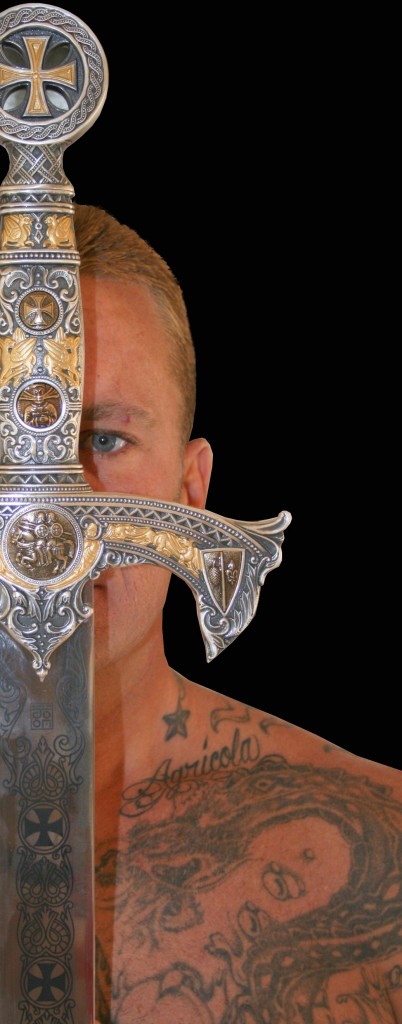 I am currently a US citizen with blonde hair and blue eyes whose parents come from Canada and ancestors from France. Never did I think growing up that I was a descendant or blood related to a nomadic desert tribe from North Africa. By a recent DNA test, it proves that my paternal blood that runs through my veins originates in North Africa where the most people who have the exact matching to my DNA Haplogroup markers come from the Dead Sea area of Jordan, where in 2005 a scientist found 14 out of 45. 30% of the men tested in the Dead Sea area of Jordan to have the YDNA of E1b1b1b2a* (E-M123), Former E1b1b1c, that you will find scattered widely in Europe, North Africa and the Middle East.
I am currently a US citizen with blonde hair and blue eyes whose parents come from Canada and ancestors from France. Never did I think growing up that I was a descendant or blood related to a nomadic desert tribe from North Africa. By a recent DNA test, it proves that my paternal blood that runs through my veins originates in North Africa where the most people who have the exact matching to my DNA Haplogroup markers come from the Dead Sea area of Jordan, where in 2005 a scientist found 14 out of 45. 30% of the men tested in the Dead Sea area of Jordan to have the YDNA of E1b1b1b2a* (E-M123), Former E1b1b1c, that you will find scattered widely in Europe, North Africa and the Middle East.
My last name is Bedard which is a corruption of Beda. You will find that there is Father and Saint of the Catholic Church named Saint Beda (Bede) whose history has been obscured
The reason I believe that “some” of the Bedouin families or tribes would have joined Rome, is because they may have been the true Gnostic predecessors to Christianity who were well versed in the doctrines of Pythagoras for they were his descendants whose religious philosophies were then later copied, changed and then absorbed by the Romans. The old wise saying, “If you can’t beat them, join them,” may have been what this family and group of Gnostics had fatefully decided at the beginning of the millennium. This theory may be spot on with the discovery of the Dead Sea Scrolls in Jordan where there is to this day a heavy contingent there of Bedouins who have resided in this area for over two thousand years.
The key to understanding the Bedouins is that even though they may all call themselves Bedouins, this does not mean they are truly united as one peoples because to put it quite simply, they are not. The facts are they are divided by various different families, tribes and alliances over the last 2,000 plus years, which means some of the Bedouin peoples are of different blood mixture that that of their desert cousins which makes family rivalries or alliances key into researching these mysterious peoples. These division have caused them to war against one another and there to be no unity amongst the lot of them.
Simply put, when you have different blood, you will have different alliances then your cousins and conflicting family goals. This can be easily proven with a an ancient Bedouin saying, “I against my brother, my brothers and I against my cousins, then my cousins and I against strangers”.
You will find that the Bedouin tribal government acted very similar to those found in Ireland, Scotland, Britain and France . You will find many similarities between this desert tribe with the Angles, Saxons and Picts about the same time of their inception. If you research the Bedouins on Wikipedia, you will discover a partial list of approximately fifty or more different tribes that proves their various alliances or different family ties over the centuries. They operate their tribes based on a hierarchy of loyalties through blood and or political alliances, but where disputes are settled amongst themselves by the passing judgments which were performed under the sacred trees of their nomadic communities. This is almost exactly the exact same way that the Druids had governed their people as well along with their sacred oak tree. In addition to the sacred tree, the Bedouins had also sacrificed animals where animal bones and traces of ancient Baal worship were recently discovered in the land of the Canaanites near Mount Sanai that make their connection to their connection to the Druids a solid one. In Part 2 of my next article, I will explore this fascinating Druid, Irish, Scottish and Bedouin connection that has never been revealed before.
SOURCES:
- Early travels in Palestine By Arculfus (bp.), Saint Adamnan (abbot of Hy.), Saint Willibald (Bishop of Eichstätt), Saewulf, Snorri Sturluson
- Palestine Exploration Fund By Patron- The Queen
- Bees By Charles C. Miller Memorial Agricultural Library
- The deciding voice of the monuments in Biblical criticism By Melvin Grove Kylen
- Journal of the African Society, Volume 11 By African Society
- Alexander’s Tomb: The Two Thousand Year Obsession to Find the Lost Conqueror By Nicholas J. Saunders
- Journal of the Society of Arts, Volume 2 By Society of Arts (Great Britain)
- Handbook for Egypt and the Sudan By Harry Reginald Hall, John Murray (Firm)
- Bulletin By Plant Industry Bureau

Moe is the founder of GnosticWarrior.com. He is a father, husband, author, martial arts black belt, and an expert in Gnosticism, the occult, and esotericism.



